Sunday Times 2
Benefit of the doubt
Obedient to the sacred legal principle that guilt must be proved beyond reasonable doubt, the jury in the 1953 Sathasivam case found the accused not guilty. That same principle applies equally to the second accused, later made crown witness, writes
Stephen Prins
NAILING down the cause for Injury No. 18, the puzzling contusion found on the back of the victim’s body, was a clinching moment in the famous 1953 Sathasivam murder trial.
From thousands of miles away, Sir Sydney Smith had seen a nail, or a hard wood or metal projection, on a kitchen wall at the Sathasivam residence in Bambalapitiya, Colombo 4. The forensic expert had reconstructed the scene of the crime in his laboratory in Edinburgh, Scotland, and concluded that there could be such a fixture on the wall, and that it was about 3 ½ feet above floor level, fitting the site of Injury No 18, if the victim standing had been thrust against the wall at this spot and strangled. Sir Sydney found exactly what he expected to find on visiting No. 7, St. Alban’s Place, during his flying visit to give evidence at the trial.
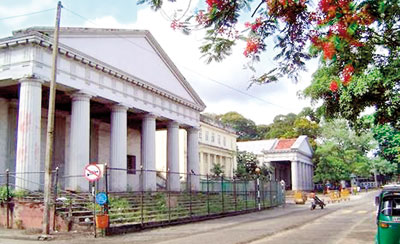
Large crowds of spectators came to the Supreme Court, in Hulftsdorp, to hear the Sathasivam trial of 1953.
“It was the turning point in the case,” said Chloe (Ms. A. C. H.) de Soyza, who attended some 20 sessions of the 57-day Supreme Court trial, between March and June 1953. “The atmosphere in the courtroom was electric as Sir Sydney Smith stood up to demonstrate how the killing took place and where exactly it had happened. From that point on, the case in support of Sathasivam kept getting stronger, while William the crown witness was appearing in a bad light.”
That piece of Sherlock Holmes sleuthing confirmed the defence’s claim that the kitchen was the scene of the murder, and not the couple’s bedroom upstairs. This contradicted the evidence of the crown witness, who said the lady of the house was murdered in her bedroom, and that he and Mr. Sathasivam brought the body downstairs and left it in the garage.
The defence, led by Dr. Colvin R. de Silva, said the scratch marks found on the servant boy’s face 11 days after the murder supported the argument that he was the killer, that it was a face-to-face killing, during which the victim had clawed her assailant’s face. The Police examined Mr. Sathasivam’s body and found it neither scratched nor bruised.
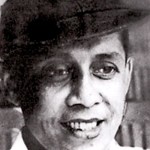
Mahadeva Sathasivam
The killing may have taken place in the kitchen, but that alone does not prove the person or persons identified with the kitchen were responsible for the killing.
Things, nonetheless, looked negative for the servant boy from Matara, whose story was disintegrating as the defence pressed on with its case.
Things had looked bad from the beginning. From the moment of his arrest, Hewa Marambage William showed himself to be an inconsistent, unreliable witness. It could have been the result of fear and panic as the full weight of authority started to bear down on him. Questioned by the Police, he admitted to the crime only to change his story when he made a statement to the Head of Police, Sir Richard Aluvihare, in Colombo. His claim that he was an unwilling partner in the murder of Ananda Sathasivam was repeatedly challenged in court.
What really happened in the Sathasivam house on the day of the murder continues to be the subject of speculation and debate six decades on. Even though the tense trial ended with the acquittal of cricketer Mahadeva Sathasivam, features of the case continue to puzzle the public.
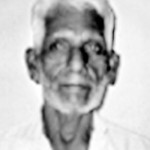
Hewa Marambage William
Many observers reject the acquittal and refuse to accept the not-guilty verdict. You either go along with the servant boy’s testimony that he was compelled by his master to assist in the killing or you don’t.
If the servant boy was the killer, the defence’s position, then the murder had to have taken place AFTER 10.30 a.m., the time Mr. Sathasivam said he left the house on October 9, 1951. If the crime took place as described by the boy, then the “assisted murder” had to have happened BEFORE 10.30 a.m, and closer to 9.30 a.m. Hewa Marambage William estimated that he fled the house, the scene of the crime, around 9.30 a.m. Between 9 a.m. and the time of the crime, he was preparing the lunch, he said. He had put the rice to boil and cleaned and cut two vegetables, drumsticks and ash plantain, and had just started to scrape the coconut when there was the disputed interruption by either Mr. or Mrs. Sathasivam. It would have taken at most 20 minutes to get to that stage in the lunch preparation.
Several issues arise, all in favour of the servant boy Hewa Marambage William.
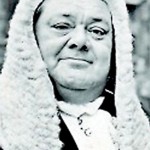
Justice Noel Gratiaen
If the murder took place after 10.30 a.m., that would only DELAY the lunch-making sequence. Marambage William had no cause to delay the lunch. His usual time to start on the midday meal was 9 a.m. If, say, the murder happened at 11.15 a.m. – the later the better to allow for maximum distancing between Mr. Sathasivam and the crime – then the servant boy would have started 20 minutes earlier, at 10.55, which is rather late in the day to launch on the lunch. If the murder took place immediately after Mr. Sathasivam left the house, at 10.30 a.m., then the boy would have started on the lunch around 10.10 a.m., still rather late, more than one hour later than his routine
Issue two is the presence of Ms. Sathasivam’s body in the garage. The prosecution said the body was removed from the bedroom and placed in the garage because Mr. Sathasivam wanted to distance the body as far as he could from the bedroom and to implicate the servant boy in the crime.
The same logic should apply in the boy’s case. If the boy committed the murder, and did so in the kitchen, as the defence alleged, then would he, an intelligent young man, take the body into a space immediately adjoining the kitchen? If the lad’s self-protective instinct was, like Mr. Sathasivam, to put as much distance as possible between himself and the crime, he would have taken the corpse not into the garage but back into the main house – leaving it in the hall-cum-dining room, or on the staircase, or in the bedroom. He would reverse the direction of Mr. Sathasivam’s actions. The last place the servant boy would have wanted to leave the body was right next to the kitchen.
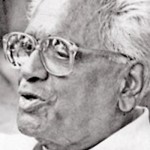
Dr. Colvin R. de Silva
The third issue is the hand mirror taken from Ms. Sathasivam’s room and placed near the body in the garage. “No village boy, no unlettered rustic, would ever have thought of using a mirror to confirm whether the strangled woman was still alive, whether she was breathing or not,” said a Colombo 3 lady from a family famous for philanthropy. “That was not the work of a servant boy, from a distant village and without an education. That was the work of a sophisticated, knowing person.”
A member of a prominent Muslim business family known to both sides of the Sathasivam family said the gentleman of the house “had more of a motive for murder than the servant boy.”
The verdict
When the jury returned a not-guilty verdict on 25 June 1953, Justice Noel Gratiaen released the man in the dock with the words, “On the verdict brought by the jury, you have been found not guilty. You are now free.”
The unbearable burden of suspicion, lifted off the shoulders of Mahadeva Sathasivam, was immediately transferred to Hewa Marambage William, seated in another part of the courtroom. As the cricket hero stepped into the golden sunshine of freedom, smiling at flashing cameras and the faces of cheering family, friends and fans, the servant boy was cowering in renewed shame and fielding the ire and contempt being lobbed at him by the crowd.
The 19-year-old village boy who came to Colombo in 1951 looking for a job, with only a banian, a shirt and a sarong to call his possessions, engaged as a servant by a respectable, well-connected family for a monthly salary of Rs. 20 (he had asked for Rs. 25), tainted by a horrible domestic crime he may not have committed but been only an unwilling party to, hauled before court as second accused in a humiliating, sensational murder trial, then invited to turn crown witness only to be finally dropped by all, discarded and labelled liar, murderer and thief – this young village lad, now 22 years, is sent home, in shame, with a railway warrant given by the state. The trajectory of fate takes Hewa Marambage William of Matara from village obscurity to the height of city celebrity-notoriety and then drops him to the bottom of an even profounder obscurity.
Meeting the Crown Witness
Once you have read and re-read all materials you can lay hands on regarding the Sathasivam case, you look around and ask what’s next. Any stone left unturned? There was one. The crown witness, originally the second accused in the case, was alive in 2003, when Prof. Ravindra Fernando met him to glean further material for “A Murder in Ceylon”, the forensic specialist’s meticulously researched study of the famous case. Would the servant boy be still alive, and if he was, would he be in a position to talk about the case?
In 2003, Hewa Marambage William was 71 years. Today, he would be, if still around, 82 years old. The book told us that William lived in a remote village in the south, a few kilometres north of Matara Town.
On Sunday, September 20, we were speeding along in a highway express bus. Galle whizzed by, and after 80 minutes of travel we got off at Thihagoda, the one but last stop.
For our luck, the Colombo three-wheel network had a colleague living in Thihagoda, P. Kumara, who was waiting for us in his red vehicle. We hopped in, the three of us – Colombo three-wheel driver Mr. Saman and newspaper colleague Bruce Maurice, who had whetted our appetite for local murder by lending us Justice A. C. Alles’s absorbing accounts of multiple homicides committed in this country.
It was a perfect day, with a clear, kingfisher-blue sky and rice paddies whispering by in a glorious green-gold shimmer; it was the kind of day that makes this the most beautiful country in the world.
This part of the south is also crocodile country. The geta kimbula or mugger periodically claims a victim. One such victim some years back was a grown son of Hewa Marambage William, the person we were on our way to meet.
Luck was on our side. We made a wrong turn and met the right people. A knot of young villagers leaning against a fence said the village of Angunabadulla lay in the opposite direction, several kilometres away. A young man on a motorcycle offered to show us the way. It was rough going, along narrow twisting dirt tracks cutting through rice fields, the motorcyclist’s scarlet T-shirt flying ahead like a red bird showing the way.
After dozens of twists, turns and bumps, we arrived at the house where Hewa Marambage William lived, with one of his sons and family. The house had a veranda. We knocked on the front door. No answer. The red-bird motorcyclist made a call on his mobile phone and heard that everyone living there was out except the grandfather. We were given permission to go in, through the back door. A dark, long, old man’s hand – appeared at a window and tugged at a curtain. No face was visible.
We entered the house from the rear. Hewa Marambage William was standing in the hall, in sarong. We had been told that he was not in good health – feeble, slow, and hard of hearing.
It is an odd sensation to get imaginatively involved in the life of someone who is first 19 years, then 21 years, and suddenly 82 years. The jump in time comes as a sobering shock. What happened to all those years between? A lifetime had gone by in a matter of weeks. Hewa Marambage William was now a senior citizen. An indefinable something hung over the encounter.
Marambage William was recognisable from his 2003 photograph in “A Murder in Ceylon.” His face was lined and marked with shadowy patches, his hair and beard white on a dark skin. His body was that of a tired old villager who had spent a lifetime in manual labour. After the trial, he took up a job in a rice mill on the south-west coast, manning a rice-hulling machine. That was how he spent the rest of his working life.
We sat down in the hall, on wood and cane chairs, and invited Marambage William to take a seat. He had to be helped into his chair. He did not look surprised, puzzled or put out to see us. He would have instantly understood why strangers had walked into his house. He relaxed a bit when a parcel of cake and biscuits was placed in his lap.
We moved a chair up close, our four kneecaps almost touching, and began what would not be a long interview. The encircling presence of the family, including a teenage girl in school uniform, was awkward.
We cut to the chase.
“Would you tell us, Mr. William, what happened that day, the day Ms. Sathasivam died?”
Marambage William looked directly at us and spoke haltingly, in broken sentences. He said he was in the kitchen making the lunch when the gentleman of the house walked in. “He caught my arm, held it firmly and led me upstairs. He said, ‘Don’t you dare make a noise’. We went into the bedroom. The master closed the door behind us. He then went over to his wife, caught her by the throat and started to strangle her.”
What was the lady’s reaction when you entered the room with the master? “She looked surprised. As if she was wondering whether we had come to discuss something.”
And the master ordered you to give a helping hand? “Yes. I held the lady down.”
The school-going girl is told by her mother to leave the room. She goes into the garden, her schoolbag still strapped to her back.
How did you hold the lady down? “I held her knees, to stop her from struggling.”
And then? “The master unlocked the bedroom door, went downstairs, closed the front door and came up again. We took the body of Ms. Sathasivam down and left it in the garage.”
Was it difficult carrying the body? Were there obstacles? Did you bump into furniture and banisters and doors as you made your way to the garage? “No. It was not difficult carrying the body between us.”
And then what did you do? “I left the house. I picked up my shirt from the kitchen and left. The master gave me jewellery that he took off Ms. Sathasivam. He also gave me money.”
You then went to the Galle Road and took a bus? “I wanted to get away from the house and the city as fast as possible. I wanted to go home and never come back.”
Long pause.
The strain of gently asking probing questions is telling. The meeting needs to be cut short. A lot of questions will have to be put aside.
Tell us, do you feel any bitterness towards the world for what happened to you? You came to the city as a jobless, hungry young man looking for work, with luck you found a job in a respectable home, and you ended up having to assist in a murder. You were arrested, interrogated, put in remand, and then you had to go through a long, physically and emotionally exhausting trial. You were two years older when you finally went home. Does all this make you angry, when you think about it? “I have no bitterness towards anyone. I had a spell of bad luck and I took it as well as I could. I had, and have, no hate in my heart towards anyone, not to Mr. Sathasivam, not to the lawyers or the Police who questioned and bullied me. I accepted all this as a part of my fate.”
What kind of people were the Sathasivams? Were they kind to you? What was the lady like? “I have no words to describe her. She was a kind and good woman.”
And Mr. Sathasivam? “He was pleasant. Never rude or unkind to me.”
Do you ever see Mr. and Ms. Sathasivam in your dreams? “I often see Ms. Sathasivam in my dreams. But not Mr. Sathasivam.”
Here, Marambage William’s eyes widened, became larger, fuller. He picked up a corner of his sarong and wiped his eyes.
We had stayed long enough. It was time to go.
Truth or fiction
When, for our benefit, the 82-year-old Hewa Marambage William looked back 63 years and in his head went through the motions that led to the Sathasivam murder and trial, was he seeing a scene that actually took place, or a scene he had fashioned in his imagination for his own sanity and protection? Was the reel of film in his head unreeling truth or fiction, his own fiction of the murder of Ms. Sathasivam? Had he told himself and the world a lie, and had that lie eventually become truth in the head of a man tortured by guilt?
We were looking directly into Hewa Marambage William’s unblinking, unflinching eyes as he told us the story he had told the Supreme Court in 1953.
If eyes are mirrors of the soul – and if they are two-way mirrors, reflecting images in front of the eye and behind,
in the mind – then, as we looked into Hewa Marambage William’s eyes, we might well have seen a reflection of two vague shadows making their way up a flight of stairs. In the minutes it took Marambage William to tell us his story, we had gone back in time and stepped into the room where Ananda Sathasivam was murdered.
A family story
The Sathasivam case is a murder story, a mystery story, a love story (love-triangle, actually), a family story, and a tragedy. More than one correspondent writing in to contribute and comment referred to the Sathasivam case as a “very sad story.”
If there is anything to feel good about in the Sathasivam tale, it is the knowledge that there was a happy ending. The daughters of the tragedy, four girls aged 10 and under, began a new life in another country, and they had an excellent second mother in Yvonne Stephenson, the Englishwoman who became Mr. Sathasivam’s second wife. The four girls were in time joined by three more siblings, the two sons and daughter of Mahadeva and Yvonne.
_________________________________
- The writer acknowledges his debt to Prof. Ravindra Fernando’s book “A Murder In Ceylon”, without which The Sathasivam Story would not have been possible.
- Most of those who corresponded with and spoke to the writer about the Sathasivam case did not want their names mentioned.
- The Sathasivam Story is dedicated to the memory of the late EILEEN PRINS, who kept the writer amply supplied in his childhood with books of adventure, mystery, mayhem – and murder.

